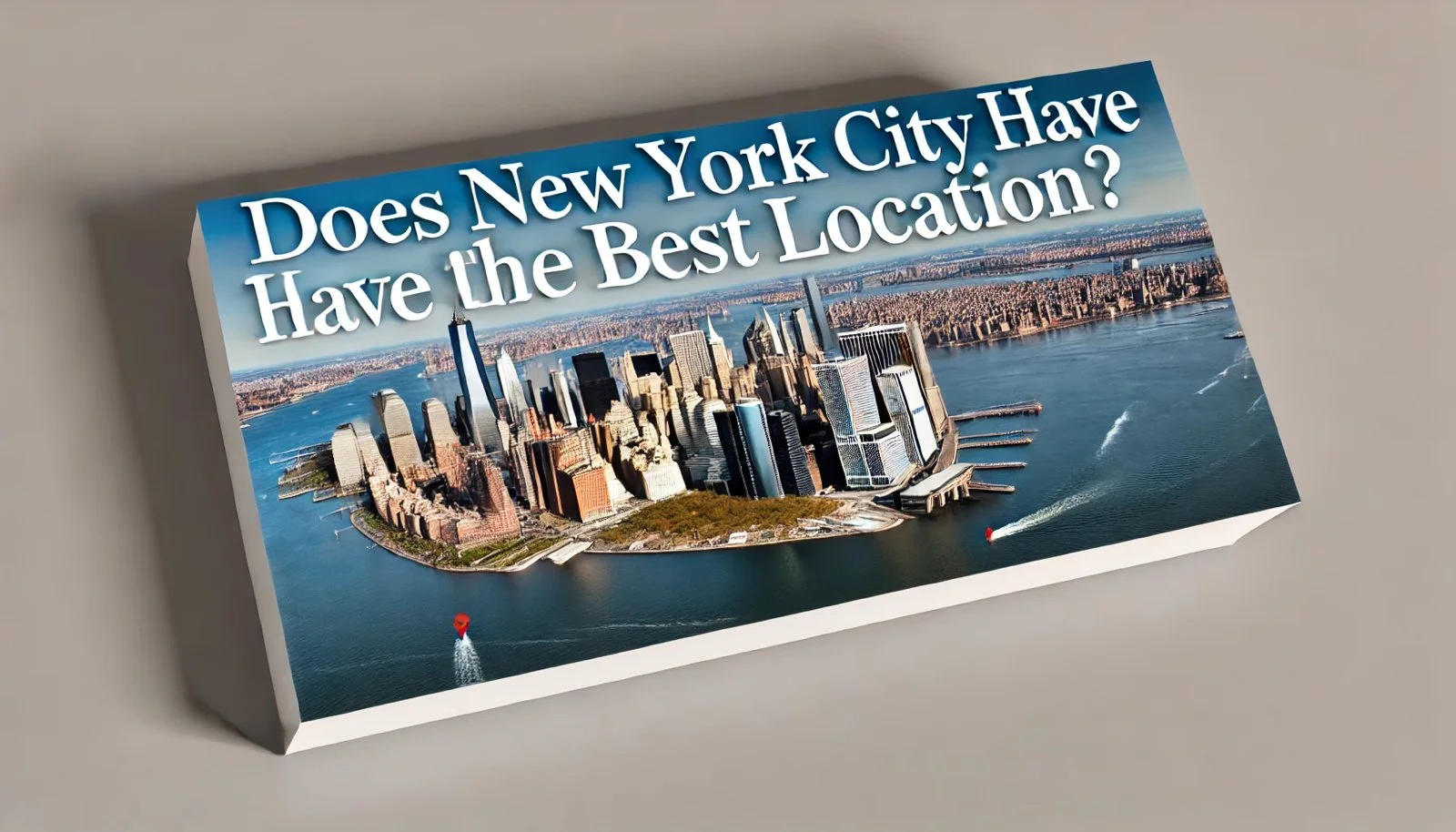Does New York City have the best location?
New York City is often called "The Big Apple." There is much being discussed about the city's geographical position. Actually, New York City is situated at the mouth of the Hudson River, offering a beautiful amalgamation of natural features to shape its development accordingly. This blog discusses whether the best location of New York City really exists and how geography may have helped it to serve as a global hub.
Strategic Advantage of Location
New York City, located in the northeastern part of the United States, is a strategic advantage from a geographical standpoint, functioning as a central hub of trade and transportation.
Accessibility to Major Markets
New York is strategically positioned for easy access into the domestic and international markets. Its accessibility to major cities such as Boston and Washington, D.C., makes it an even better destination as a commercial center. Ships from Europe can easily take up to half the time it would take to reach other ports, making this port a more ideal choice for international shipping.
Transportation Center
It was a critical transportation center, highly flavored with broad railroads, highways, and airports connecting it with other major cities. Extending infrastructures like the Erie Canal in the early 19th century reinforced the New York trade center by linking the Atlantic Ocean with the Great Lakes.
Natural Harbor
New York City has its strongest geographical advantages: natural harbors. The harbour is protected by Staten Island and the Brooklyn peninsula, and this is the ideal port for shipping.
Trade and Shipping
New York Harbor has historically provided shelter and depth, making it a port that is best suited for shipping. Such an advantage placed New York as the ultimate leader in international trade in the 19th century when industrialization is rising. To date, the Port of New York and New Jersey continues to be one of the busiest ports in the United States.
Economic Growth
The ability of the port to harbor bigger vessels has made New York a major recipient of a large volume of cargo, which has stimulated economic growth. As trade grows, other businesses that rely on imported cargo emerged to include manufacturing and retail.
Varied Topography
New York City comes through a composite of islands, rivers and landscapes while highly urbanized.
Islands and Waterways
The metropolis consists of five boroughs-Manhattan, Brooklyn, Queens, Staten Island, and the Bronx, which, depending on the geographical conditions, are diverse. An example is the case of Manhattan's bedrock, which serves as a solid base for skyscrapers, whereas in Brooklyn, waterfronts stretch over vast areas and make it all the more attractive for residential as well as commercial purposes.
Urban Density
Urban areas are densely populated due to limited land area. This has resulted in a vibrant, lively urban culture. The likelihood of combining the many cultures together and fostering innovations is quite high due to diversity in the communities.
Historical Background
But the historical context supporting these geographical divisions is an extension of our knowledge. The city of New York, as we know it today, was formed in 1898 through the consolidation of the five boroughs into one municipal government; this has shaped how people think about their relationship with land and water.
Cultural Identity
The passing of time has enabled each borough to create a unique cultural identity. For instance, Manhattan is identified as the culture and financial hub, while Brooklyn has grown up being the borough of artistic communities and trendy neighborhoods.
Economic Opportunities
Geographical advantage that has led to economic opportunities in New York City has attracted businesses and residences.
Financial Capital
Wall Street is the financial capital of America. Because it exists in a natural harbor, it naturally serves international markets. A vast majority of the Fortune 500 companies have their headquarters based in New York City, making it a world financial capital.
Cultural Institutions
New York's diverse geography has fostered a vibrant cultural life. From the museums to the neighborhoods, as presented in Queens, New York City is simply the place.
Conclusion
A good amount of geographical advantages contribute toward making New York City a global powerhouse, and this aspect is enhanced by its location at the mouth of the Hudson River with a natural harbor and an immense transportation network.
And it is against this backdrop that the resident of this exciting city finds their way, whether at the service level by using such agencies as Sparkly Maid NYC or the cultural scene at Queens; they do benefit from those geographical features that have fashioned New York into what it is today. No other city could vie with this all-rounded feature of location in New York City.
